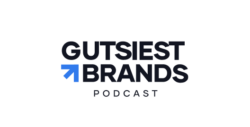We’re navigating challenging times, and they require increasingly innovative and agile solutions to keep up. But how can businesses truly understand what their target audience expects, without hearing from them directly? The answer is simple: They can’t.
Consider this — with people home more and going out socially less often, alcohol sales have been on the rise. This is promising for the industry!
But at the same time, consumers are changing their behaviors and expectations faster than ever before. It’s not enough to rely on assumptions or outdated data in an evolving landscape without risking costly and time-consuming new product development (NPD) missteps.
Let’s take a closer look at what’s required to make decisions, and which approaches make good sense for short- and longer-term success.
What are you looking to achieve in the coming months?
It’s important to start by identifying the goals and wins you’re looking to go after, and the timeline you’re working with.
As a jumping off point in this discovery phase, following a simple, four-component structure in the areas of short-term versus long-term and revenue versus strategic undertakings can help. As these informative factors overlap, priorities emerge including:
● Claims, new variants, and communication (for those focused on the short-term and revenue)
● Pack formats (for a focus on short-term, strategic wins)
● New categories, benefits, and new ideas (for long-term, revenue-driven focus)
● New positioning (for long-term, strategic wins)
With a clearer view of your areas of opportunity — no matter what your goals are — next consider these simple questions. First, what are your objectives? What data do you need to answer your objectives? And lastly, what decisions will you make with that data?
A game plan for success: Getting you to where you want to be
Once you’ve identified your goals and priorities, recent launches show that businesses can maximize potential by doing at least one of the following as part of NPD:
● Concept testing to define the appeal
● TURF if you have multiple variants, to maximize reach
● Image testing to confirm consumers understand what the product will convey
If these approaches sound time-consuming, you may be surprised to learn that they don’t have to be. Agile, fast, and efficient solutions no longer come at the cost of accuracy. They’re not seen with the negative connotations they once were, instead being embraced by some of the largest brands across sectors.
Whether you’re looking at a solution for short-term or long-term success — or both — here are some key benefits to these NPD research techniques:
● Quick and agile: All together, they take less than 72 hours to complete. Each method in isolation can be completed in less than 24 hours.
● Versatile: There are lots of options available to you that are quick and easy to deploy.
● Supportive: They work with you toward your goals (for example, the more short-term your objectives, the faster you need to move).
● Substantial: They offer as much data as you need (for example, the more long-term your goals, the more data you need to quantify the opportunity in order to mitigate the risk).
● Actionable: Using the data to make the right decisions.
Using technology to quickly evaluate success: A case study
It’s one thing to have a roadmap of your goals and the tools and techniques to push you toward them, but another to make it happen! Let’s take a look at a hypothetical case study about new products — more specifically, beer. Using beer from 20 different brewers around the world, here are the answers to those three key questions we discussed earlier:
1. Objectives: Could one of these beers be successful in the U.K.?
2. Data: Would consumers purchase? Are they different from those existing today? Is it believable?
3. Decisions: To launch or not?
Here, a solid approach would be concept testing, but it must be manageable to be effective. Because 20 is too many variants for one single concept test, we’ll go with a more digestible sample.
Using a screening process that features images only to mimic a launch without support, we’d then ask respondents if they would buy this product; whether it’s different from what exists today; if they would order it in a bar or pub (hopefully in the not-too-distant future); and how it makes them feel.
In just a few hours of early stage screening, the top five best performers across metrics were revealed, and the data indicates the highest performing variants per category — Molson Cold Shots; Toohey’s New Lager; Toohey’s Old Dark Ale; Carlton Draught; and Molson Dry.
What’s next? A working concept around each winning product from the screening phase to explain the product and its heritage, effectively offering a more in-depth view of each. We ran a concept test using an automated solution for speed and agility, with results in less than 24 hours. This is where we’d gather data from real respondents in the target audience for purchase intent; likeability; distinctiveness; believability; and importance — then compare it to industry norms. The robust, real-time data could then be used to make NPD decisions to match your short- and long-term goals.
As you break down the results, it’s important to determine a threshold for success, with the products coming in above it being your front-runners for meeting your specific goals. Lowering your threshold provides more opportunity, whereas setting a higher threshold enforces stricter standards and ensures that only the best survive.
We’re living in a time where it’s possible to quickly build surveys, delivered anywhere in the world, with real-time access and reliable results. With speed no longer a problem, the emphasis is now back to you and how you’ll use the data available to you. What does the business need to achieve? How will you make decisions? What does success look like? It’s up to you, and the sky’s the limit.



 Back to Blog
Back to Blog

